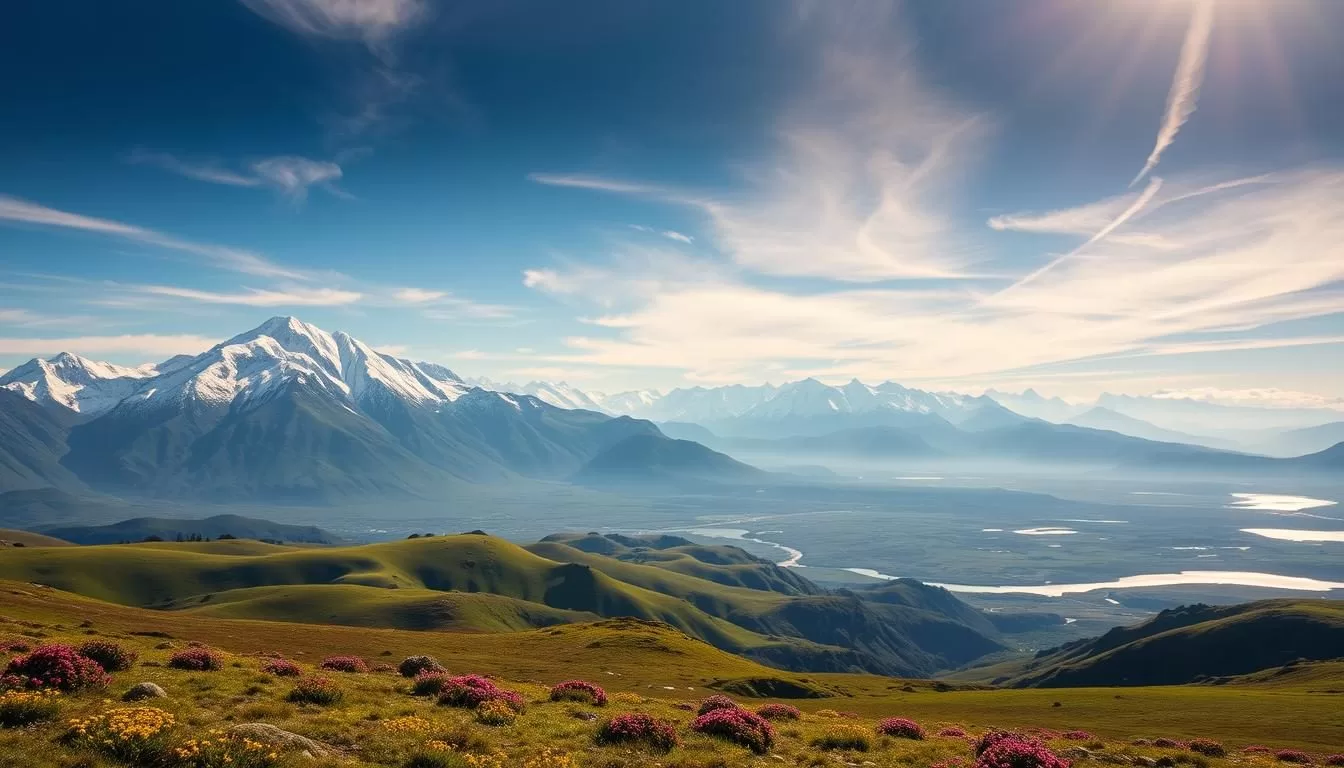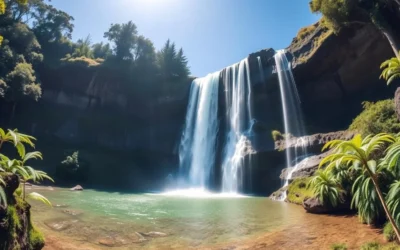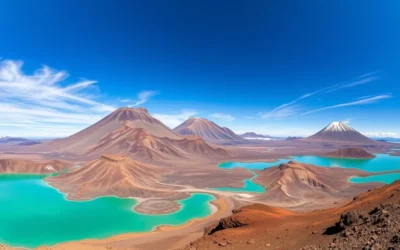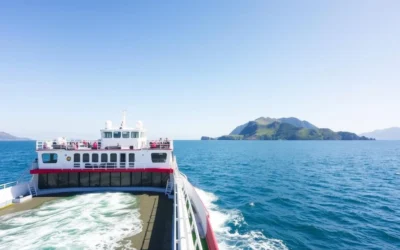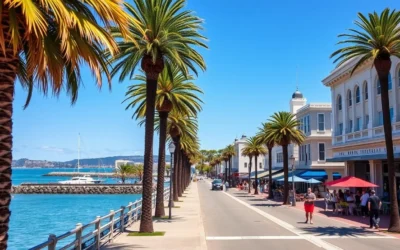✓ Accommodations✓ Flights✓ Rental Cars✓ Tours & Activities
Exploring a destination with diverse climates can be both exciting and challenging. Understanding the weather patterns is key to making the most of your trip. Whether you’re hiking, sightseeing, or simply relaxing, knowing the ideal time to visit ensures a smooth and enjoyable experience.
This region offers a mix of sunny days, crisp winters, and vibrant seasonal changes. For instance, summer temperatures range from 68°F to 86°F, perfect for outdoor activities. Meanwhile, autumn and spring provide milder weather, ideal for fewer crowds and scenic adventures.
Before booking your trip, check the weather forecasts and seasonal data. This guide will help you navigate the best times to visit, ensuring you’re well-prepared for your journey.
Overview of South Island’s Climate and Seasons
Understanding the climate of a region can make or break your travel experience. The South Island boasts a temperate climate, characterized by mild summers and crisp winters. This makes it a year-round destination for outdoor enthusiasts and nature lovers.
Coastal areas enjoy moderate temperatures, while the mountainous interiors experience more dramatic weather shifts. For instance, Queenstown sees average highs of 50°F in winter, while Christchurch remains slightly warmer at 54°F. These variations highlight the island’s diverse landscapes.
General Weather Patterns Across the Island
The South Island’s weather is heavily influenced by its coastal location. Coastal cities like Christchurch benefit from milder conditions, while inland regions like Queenstown face colder winters. This creates a unique blend of climates across the island.
Spring and autumn are particularly pleasant, with temperatures ranging from 41°F to 67°F. These seasons are ideal for those seeking fewer crowds and vibrant natural scenery.
Distinctive Regional Variations
Coastal areas often experience less rainfall compared to the mountainous regions. For example, Christchurch averages seven rainy days in November, while Queenstown sees nine. This makes coastal escapes a popular choice for travelers.
In contrast, the Southern Alps bring snow-covered peaks and chilly winters, perfect for skiing and snow sports. These regional differences ensure there’s something for everyone, no matter the time visit.
“The South Island’s climate is as diverse as its landscapes, offering endless opportunities for adventure.”
Whether you’re planning to explore coastal towns or hike through alpine trails, understanding these weather patterns will help you choose the best time to visit. This sets the stage for a deeper dive into seasonal insights in the next sections.
Latest Weather Trends and Seasonal Insights
Recent weather patterns offer valuable insights for travelers. Understanding these trends helps you plan better and make the most of your trip. Whether you’re exploring coastal areas or hiking through mountains, knowing what to expect ensures a smoother experience.
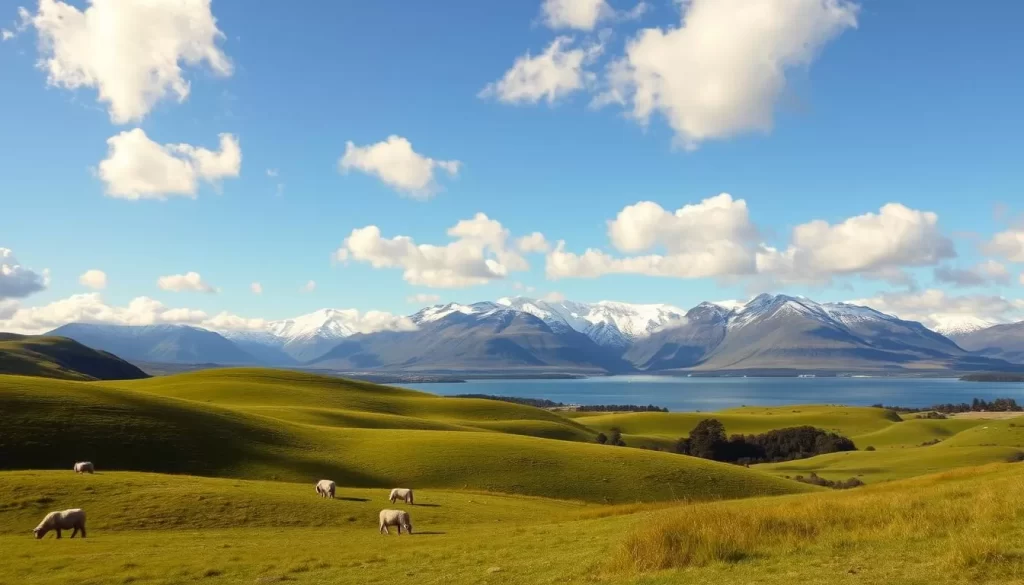
Temperature and rainfall variations are key factors to consider. For instance, La Niña events often bring warmer and drier conditions to the South Island, though cold southerly outbreaks can still occur. This makes summer an ideal time for outdoor activities, with temperatures ranging from 68°F to 86°F.
Temperature and Rainfall Variations
Recent data shows that coastal areas experience milder weather compared to inland regions. For example, Christchurch averages seven rainy days in November, while Queenstown sees nine. These differences highlight the importance of choosing the right season for your activities.
Here’s a quick comparison of weather conditions between the North and South Islands:
| Region | Summer Temperature | Rainfall (November) |
|---|---|---|
| North Island | 75°F – 84°F | 6 rainy days |
| South Island | 68°F – 86°F | 7-9 rainy days |
These variations mean that the North Island often feels warmer and less rainy, while the South Island offers cooler, more diverse climates. Depending on your preferences, you can choose the best time to visit.
“Understanding seasonal trends ensures you’re prepared for any weather surprises during your trip.”
Seasonal insights also help you avoid unexpected challenges. For example, thunderstorms can occur at any time of year, but the Thunderstorm Outlook page provides updates on at-risk areas. Staying informed allows you to adjust your plans and enjoy your adventure without disruptions.
South Island, New Zealand: Best Months for a Weather-Savvy Trip
Timing your trip right can make all the difference in your travel experience. Each season brings unique weather patterns, influencing your daily adventures. Whether you’re exploring coastal towns or hiking alpine trails, understanding these variations ensures you’re well-prepared.
Summer, from December to February, is the peak tourist season. Temperatures range from 68°F to 86°F, perfect for outdoor activities like hiking and beach days. However, this is also the busiest time, so expect larger crowds and higher prices.
In contrast, winter, from June to August, offers a quieter experience. July is the coldest month, with average temperatures around 14°C (57°F). This is ideal for skiing and snow sports, especially in the Southern Alps. If you prefer milder weather, spring and autumn provide a balance of fewer crowds and pleasant conditions.
Here’s a quick comparison of average temperatures and rainfall across seasons:
| Season | Average Temperature | Rainfall |
|---|---|---|
| Summer | 68°F – 86°F | Low |
| Winter | 14°C (57°F) | Moderate |
| Spring/Autumn | 41°F – 67°F | Low to Moderate |
Planning your trip based on the season and time of day can enhance your experience. For example, mornings are often cooler, making them ideal for hikes, while afternoons are perfect for relaxing by the coast. Understanding these nuances ensures you make the most of your year-round adventure.
“The right season can transform your journey into an unforgettable experience.”
As you prepare for your trip, consider how each season aligns with your interests. Whether you’re chasing summer sun or winter snow, careful planning ensures a seamless and enjoyable adventure.
Planning Your Adventure with Seasonal Outdoor Activities
Planning your trip around seasonal activities ensures you make the most of every moment. Each month brings unique opportunities to explore the outdoors, whether you’re basking in the summer sun or carving through winter snow. Aligning your activities with the right season can transform your trip into an unforgettable experience.
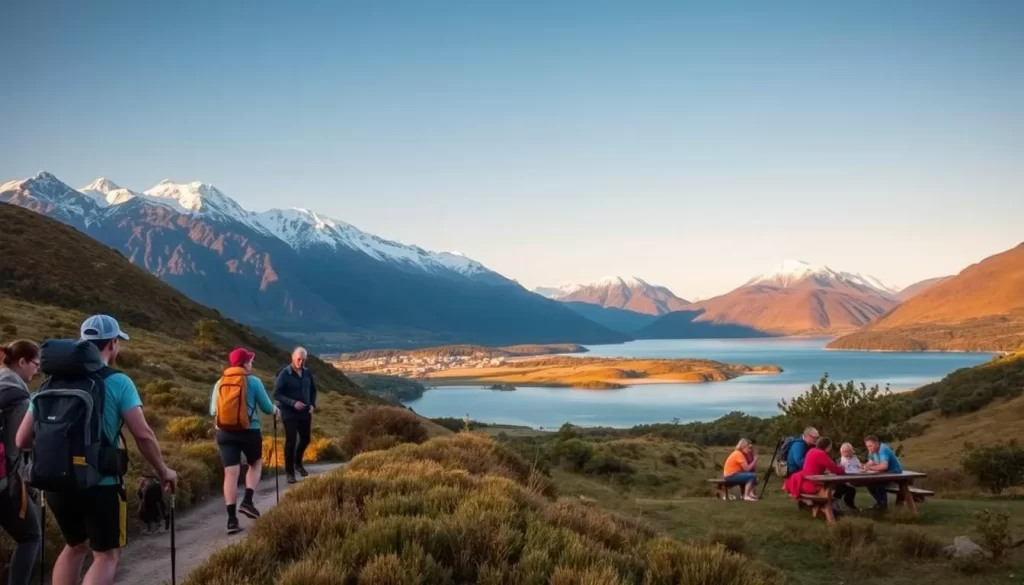
Summer Beach Days and Hiking Trails
Summer is the perfect time for beach days and hiking adventures. From December to February, temperatures range from 68°F to 86°F, ideal for outdoor activities. Coastal areas like Christchurch offer long, sunny days, while inland trails provide stunning views of the landscape.
February is the best month for hiking, with average temperatures around 71°F and low rainfall. Whether you’re exploring coastal paths or alpine trails, summer is the peak season for outdoor enthusiasts.
Winter Skiing and Snow Sports
Winter transforms the region into a snowy wonderland, perfect for skiing and snow sports. July is the coldest month, with temperatures averaging 28°F. Ski fields in Queenstown and the Southern Alps offer world-class slopes for all skill levels.
July and August are the best months for skiing, with snow-covered peaks and crisp, clear days. Whether you’re a seasoned skier or a beginner, winter provides endless opportunities for adventure.
| Season | Activities | Best Months |
|---|---|---|
| Summer | Beach days, hiking | December – February |
| Winter | Skiing, snow sports | July – August |
By planning ahead, you can make the most of your trip throughout the year. Whether you’re chasing summer sun or winter snow, aligning your activities with the right season ensures a seamless and enjoyable adventure.
“The right activities in the right season can turn your journey into a lifelong memory.”
Exploring Regional Highlights: Coast, Mountains, and Beyond
Discovering the diverse landscapes of this region offers something for every traveler. From subtropical coastal escapes to snow-capped mountain peaks, the contrasts are striking. Whether you’re drawn to sunny beaches or alpine adventures, understanding these regional highlights ensures a well-rounded experience.
Coastal Escapes and Subtropical Experiences
Coastal areas provide a refreshing escape with milder temperatures and vibrant scenery. In summer, average daytime temperatures range from 68°F to 77°F, perfect for beach days and light hiking. Regions like Christchurch offer long, sunny days, while subtropical beaches invite relaxation and exploration.
Spring brings a refreshing change, with wildflowers blooming and canola fields peaking in October. This season is ideal for coastal walks and outdoor activities, offering a balance of pleasant weather and fewer crowds.
Mountain Adventures and Winter Wonders
In contrast, the mountainous interiors offer dramatic landscapes and colder climates. Winter transforms these regions into snowy wonderlands, with average high temperatures in the 50s°F. Queenstown, for example, is a hub for skiing and snow sports, attracting enthusiasts from around the world.
Here’s a quick comparison of coastal and mountain climates:
- Coastal Areas: Milder temperatures, ideal for beach days and spring hikes.
- Mountain Regions: Colder winters, perfect for skiing and snowboarding.
Whether you’re exploring coastal trails or carving through mountain slopes, the region’s diverse climates ensure endless opportunities for adventure. Spring and winter each bring unique experiences, making it a year-round destination for travelers.
“From sunny beaches to snowy peaks, the contrasts in this region create unforgettable memories.”
By exploring both coastal and mountain landscapes, you’ll appreciate the full spectrum of what this region has to offer. Plan your trip to include these highlights, and you’ll leave with stories to last a lifetime.
Tips to Avoid Crowds and High Season Premiums
Smart planning can help you avoid the stress of crowded destinations and high costs. By timing your trip strategically, you can enjoy a more relaxed and budget-friendly experience. Whether you’re exploring popular attractions or relaxing in nature, these tips will ensure your journey is smooth and enjoyable.
Booking Accommodation and Transportation Early
During the high season, accommodations and transportation fill up quickly. Booking early ensures you secure the best options at reasonable prices. For example, peak tourism occurs from December to February, with January being the busiest month. By planning ahead, you can avoid last-minute stress and inflated costs.
Transportation, such as rental cars and flights, also sees a surge in demand during holidays. Early bookings not only save money but also guarantee availability. This is especially important in popular destinations where options can be limited.
Traveling During Shoulder Seasons
The shoulder season, typically March to May and September to November, offers a perfect balance of pleasant weather and fewer crowds. Temperatures during these months range from 13°C to 19°C, making it ideal for outdoor activities. You’ll also find lower prices on accommodations and flights, allowing you to stretch your budget further.
Traveling during these periods also means shorter lines at attractions and a more relaxed pace. For instance, May is noted as the cheapest month to fly, falling outside the high season of November through January. This makes it an excellent time to explore without the hustle and bustle.
“Traveling during shoulder or low seasons can help avoid crowds and reduce costs, allowing for a more enjoyable experience at popular destinations.”
By avoiding peak holiday times, you can enjoy a more peaceful and affordable trip. Early planning and strategic timing are key to making the most of your adventure. For more insights, check out our guide on traveling during shoulder or low seasons.
Hiking, Biking, and Other Outdoor Experiences
Outdoor adventures here offer a mix of thrilling hikes, scenic bike rides, and breathtaking views. Whether you’re exploring coastal trails or mountain paths, there’s an activity for every adventurer. The diverse landscapes make this area a paradise for outdoor enthusiasts.
Popular Hiking Trails and Safety Considerations
One of the most iconic hikes is the Abel Tasman Coast Track, known for its golden beaches and lush forests. This trail is perfect for autumn, offering cooler temperatures and vibrant foliage. However, always check the weather before heading out, as conditions can change quickly.
Safety is key when hiking. Pack essentials like water, snacks, and a first-aid kit. Wear sturdy shoes and dress in layers to adapt to changing weather. Staying prepared ensures a smooth and enjoyable activity.
Discovering Scenic Biking Routes
For biking enthusiasts, the region offers routes with stunning views and fewer crowds. The West Coast Wilderness Trail is a favorite, winding through forests, rivers, and historic sites. This area is particularly beautiful in autumn, with golden leaves and crisp air.
When biking, always wear a helmet and carry a repair kit. Plan your route in advance and check for any trail closures. These tips ensure a safe and memorable activity.
“Whether on foot or by bike, proper preparation is key for a great outdoor adventure.”
Embrace the beauty of autumn while exploring these trails and routes. With the right planning, your outdoor activity will be both fun and rewarding. For more insights on choosing the perfect area for your adventure, check out this guide.
What to Pack for New Zealand’s Unpredictable Weather
Packing for a trip to a place with unpredictable weather requires careful planning. Conditions can shift rapidly, so being prepared ensures you stay comfortable and enjoy your adventure. Layering is the key to adapting to sudden changes, whether you’re facing chilly mornings or warm afternoons.

Layering Essentials for Changing Conditions
Start with a base layer of moisture-wicking fabric to keep you dry. Add a mid-layer like a fleece or lightweight jacket for warmth. Top it off with a waterproof outer layer to shield you from rain or wind. This approach lets you adjust to varying temperatures throughout the day.
Don’t forget accessories like a hat, gloves, and a scarf. These small items can make a big difference in cold or wet conditions. The thing to remember is flexibility—your packing list should adapt to the weather you encounter.
Rain Gear and Winter Essentials
Rain is common in many regions, so a sturdy raincoat and waterproof shoes are must-haves. For zealand winter trips, pack thermal layers and insulated boots to stay warm in snowy or icy conditions. A compact umbrella can also be handy for sudden showers.
Here’s a quick checklist for your packing list:
| Item | Purpose |
|---|---|
| Moisture-wicking base layer | Keeps you dry and comfortable |
| Waterproof jacket | Protects against rain and wind |
| Thermal layers | Provides warmth in cold weather |
| Waterproof shoes | Keeps feet dry in wet conditions |
By packing smart, you’ll be ready for anything the weather throws your way. For more tips on preparing for your trip, check out this .
“The right gear can turn unpredictable weather into an opportunity for adventure.”
Understanding Budget Travel: Best Times to Save
Traveling on a budget doesn’t mean you have to compromise on quality or experiences. With smart planning, you can explore this stunning region without breaking the bank. Understanding the climate and timing your trip strategically can make all the difference.
One of the best ways to save is by traveling during off-peak times. The shoulder seasons, from March to May and September to November, offer lower prices on flights and accommodations. These months also provide pleasant weather, making them ideal for outdoor activities.
Booking in advance is another key strategy. During the high season, from December to February, prices soar due to increased demand. By planning ahead, you can secure better deals and avoid last-minute stress.
Here’s a quick comparison of peak vs. off-peak travel costs:
| Season | Average Flight Cost | Accommodation Cost |
|---|---|---|
| Peak (Dec-Feb) | $800-$1,200 | $150-$250/night |
| Off-Peak (Mar-May, Sep-Nov) | $500-$700 | $80-$120/night |
Understanding the climate of the island also helps you choose a financially smart time. For example, winter months (June-August) are cheaper but colder, making them perfect for skiing and snow sports. If you prefer milder weather, spring and autumn are excellent alternatives.
Budget travel doesn’t mean sacrificing quality. By cooking meals instead of eating out, using public transportation, and staying in budget accommodations like hostels or Airbnbs, you can stretch your dollars further. For more tips on traveling smart, check out this guide.
“Traveling during off-peak seasons not only saves money but also offers a more relaxed and authentic experience.”
By planning your trip around these strategies, you can enjoy all that this region has to offer without overspending. Whether you’re exploring coastal towns or hiking through mountains, budget travel can be both affordable and unforgettable.
Seasonal Festivals and Cultural Highlights on the South Island
Seasonal celebrations offer a deeper connection to local traditions. Each period of the year brings unique events that showcase the region’s vibrant culture. From summer festivals under the sun to cozy autumn gatherings, there’s always something to experience.

Summer Celebrations and Events
Summer is a time for lively festivals and outdoor fun. The sun shines brightly, making it perfect for events like the Queenstown Winter Festival, which marks the start of the season with music, food, and sport activities. These celebrations bring communities together and offer a glimpse into local life.
Another highlight is the Matariki Festival, celebrated in June or July. This fortnight-long event honors the Māori New Year with cultural performances, feasts, and traditional trail walks. It’s a great way to immerse yourself in the region’s heritage.
Autumn and Spring Cultural Experiences
Autumn and spring offer quieter but equally enriching experiences. During these periods, you can explore events like the Hawkes Bay Food and Wine Classic, held in June. This festival celebrates local cuisine and wineries, offering a taste of the region’s flavors.
Spring is also a great time for outdoor sport activities. The Tasman Great Taste Trail offers cycling routes through scenic landscapes, perfect for enjoying the mild weather. These events provide a more relaxed way to connect with the culture and nature.
| Season | Festival | Highlights |
|---|---|---|
| Summer | Queenstown Winter Festival | Music, food, and sport activities |
| Autumn | Hawkes Bay Food and Wine Classic | Local cuisine and wineries |
| Spring | Tasman Great Taste Trail | Cycling through scenic landscapes |
“Festivals are more than events; they’re a celebration of culture, community, and connection.”
Whether you’re basking in the summer sun or exploring autumn trails, these festivals add a special touch to your journey. For more insights on planning your trip around these events, check out this guide.
Conclusion
Planning your adventure around the seasons ensures you experience the region’s diverse beauty at its finest. From the vibrant landscapes of island summer to the quieter charm of the shoulder season, each time year offers unique opportunities. Whether you’re drawn to popular attractions or prefer peaceful walks, understanding the climate helps you create the perfect itinerary.
For instance, Queenstown in November offers a vibrant spring, showcasing colorful landscapes and outdoor activities. This balance of weather and fewer crowds makes it an ideal choice for travelers seeking both adventure and relaxation.
By aligning your plans with seasonal insights, you can enjoy the best of what this region has to offer. Embrace every moment of your journey, and let the changing seasons guide your exploration.
The above is subject to change.
Check back often to TRAVEL.COM for the latest travel tips and deals.
